
Why are some saguaros so tiny?
Life Cycles
4.7
(241 reviews)
Scroll for prep
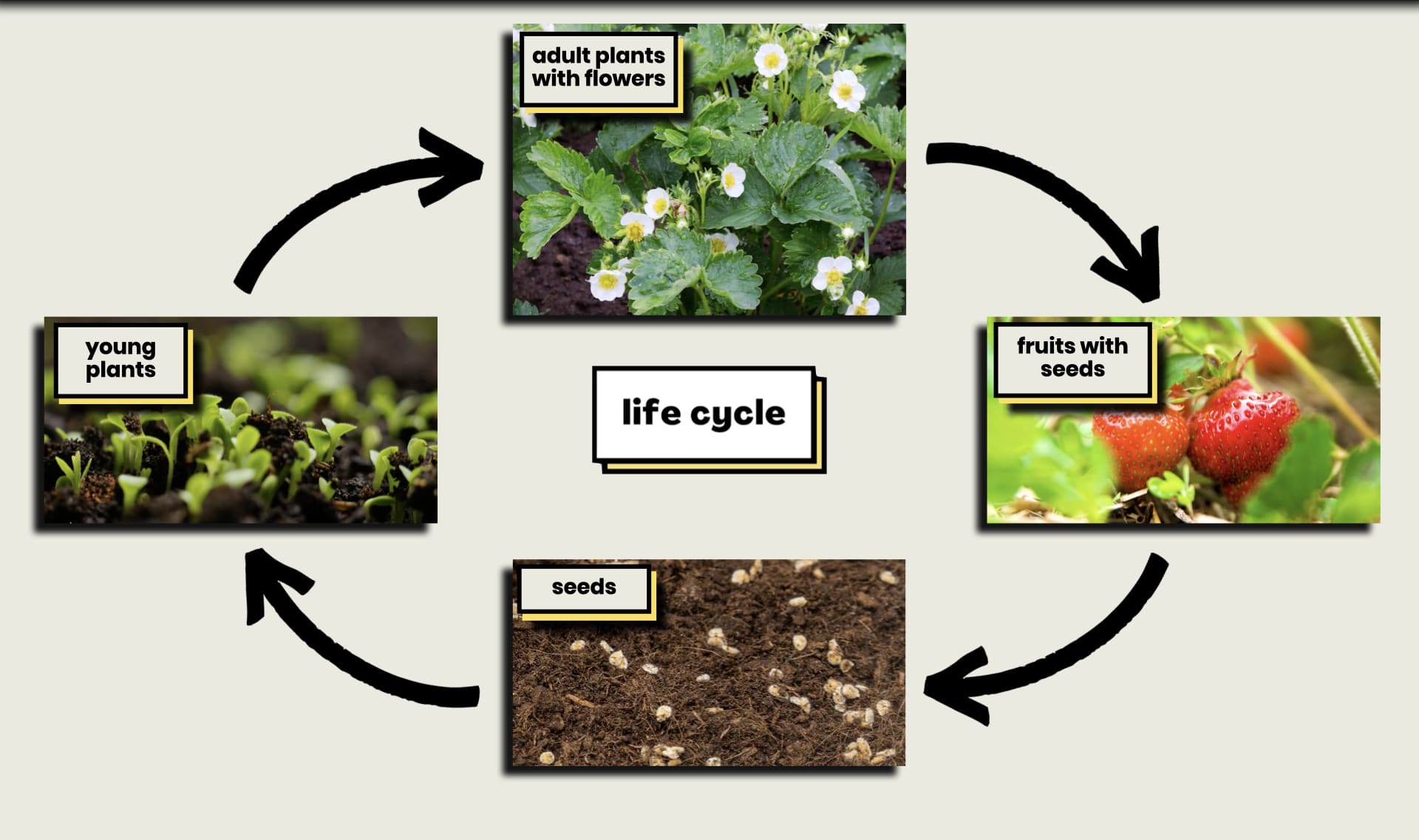
In this unit, we learned about cycles that living things go through. When the same
events happen over and over again, we call it a cycle. Let’s review some of the
cycles that we saw.
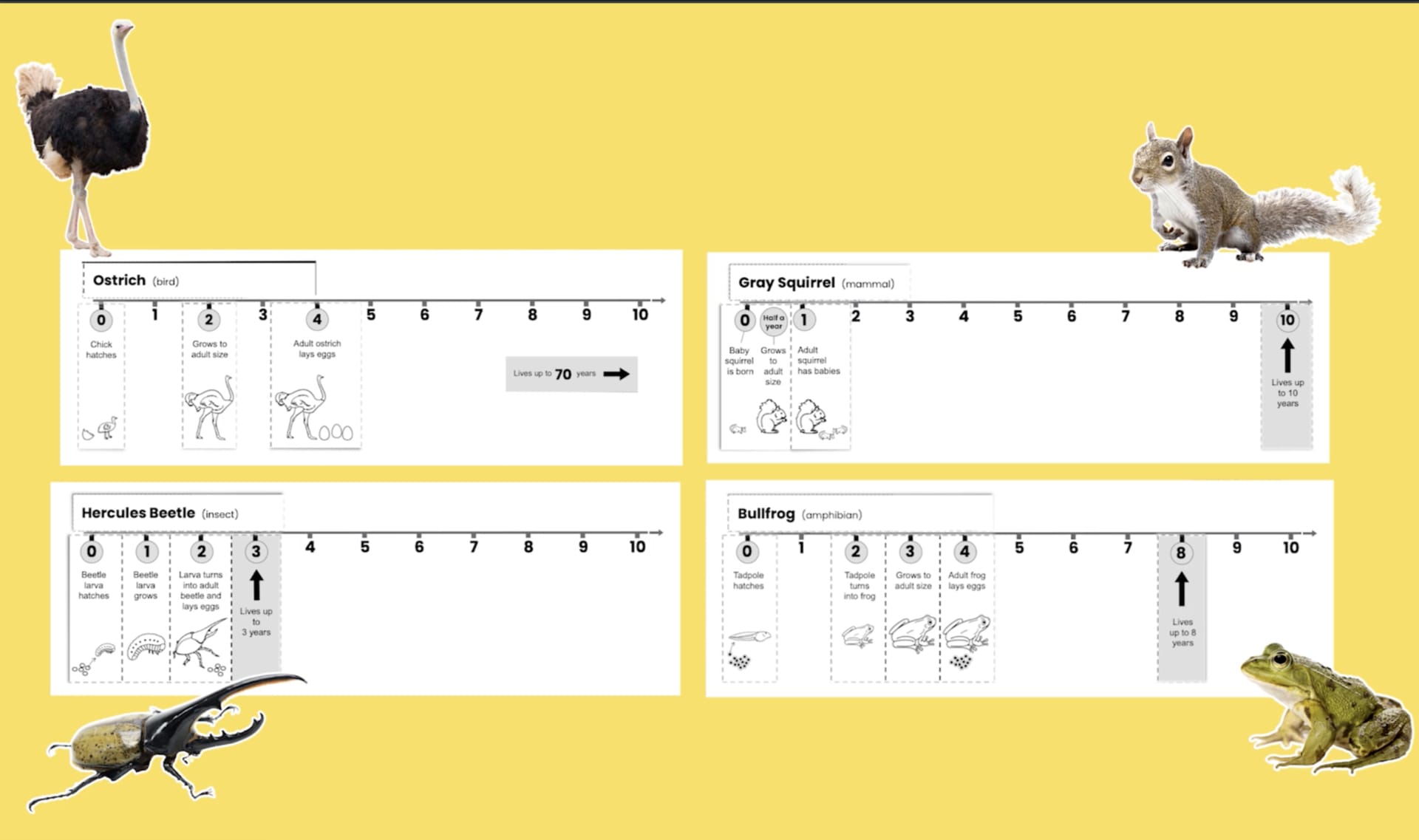
In the first lesson, you saw that all animals go through life cycles. While the details
might be different, all animals go through some of the same major events.
Discuss. Which events are the same for all animal life cycles?
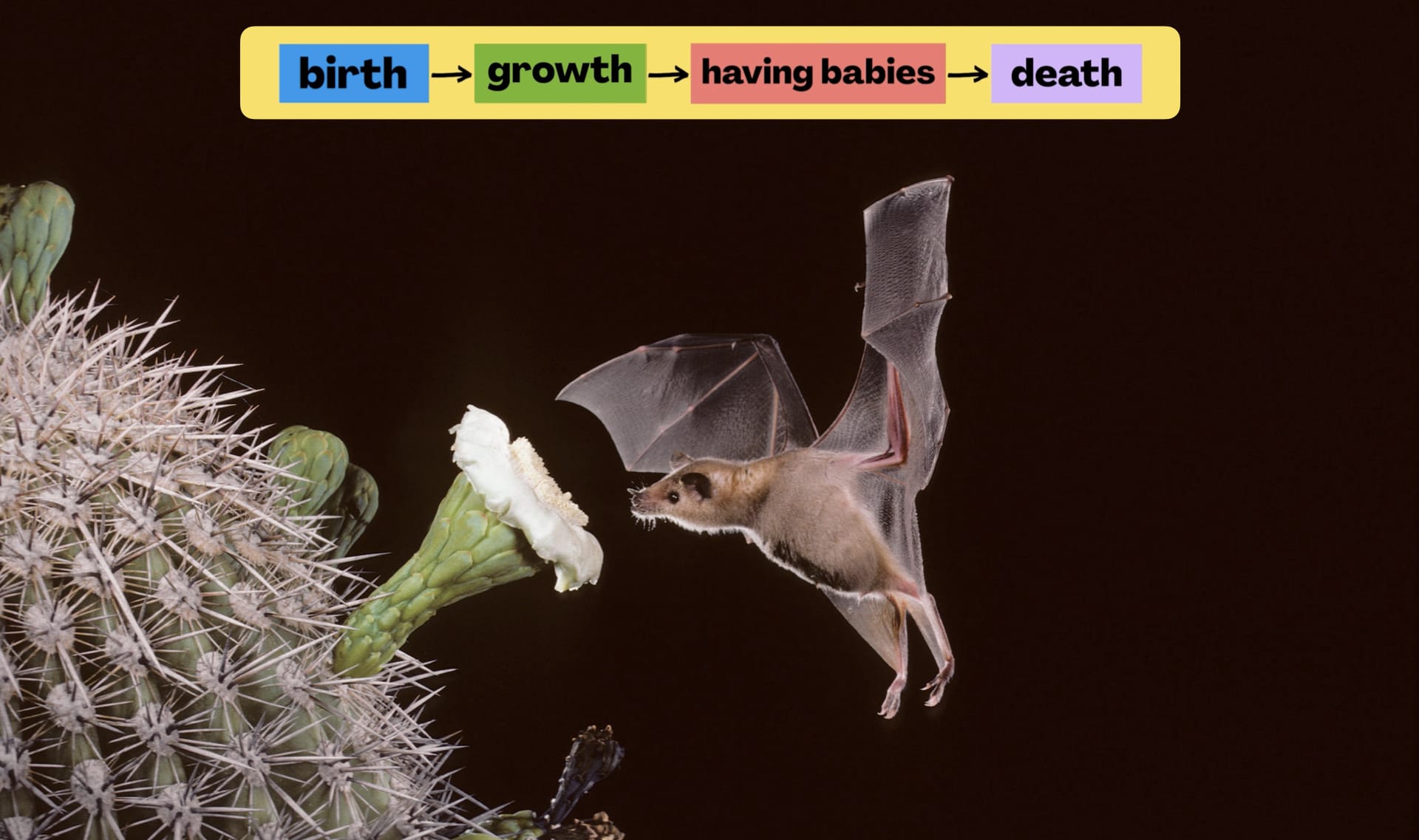
Bats also go through life cycles. Bats are born, they grow, they have babies, and
these bats live for about 20 years. The baby bats that are born will grow, have
babies, and live for about another 20 years. These events happen again and
again. It is a cycle.
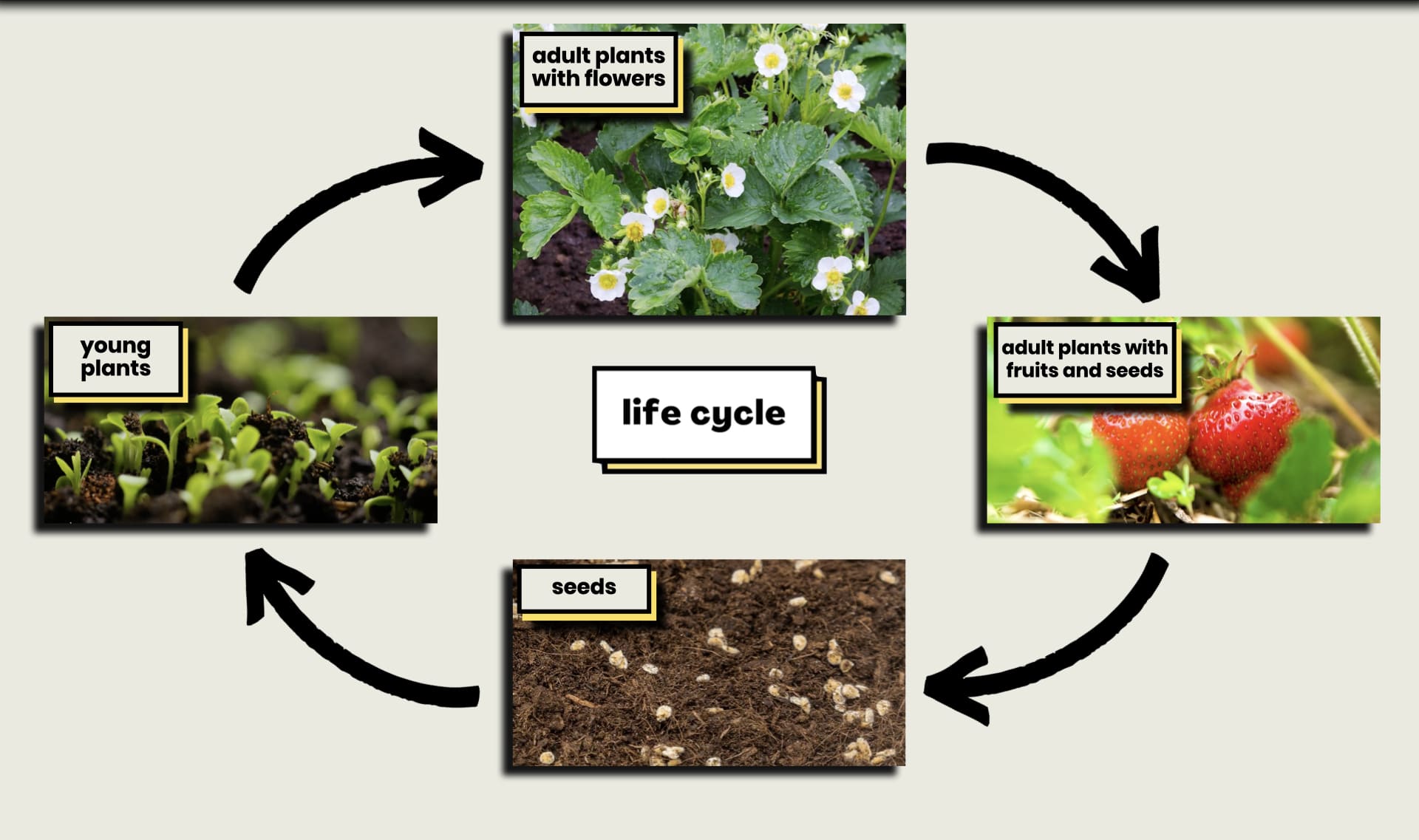
Plants go through life cycles, too. Discuss. What do these pictures and arrows
show us about plant life cycles?
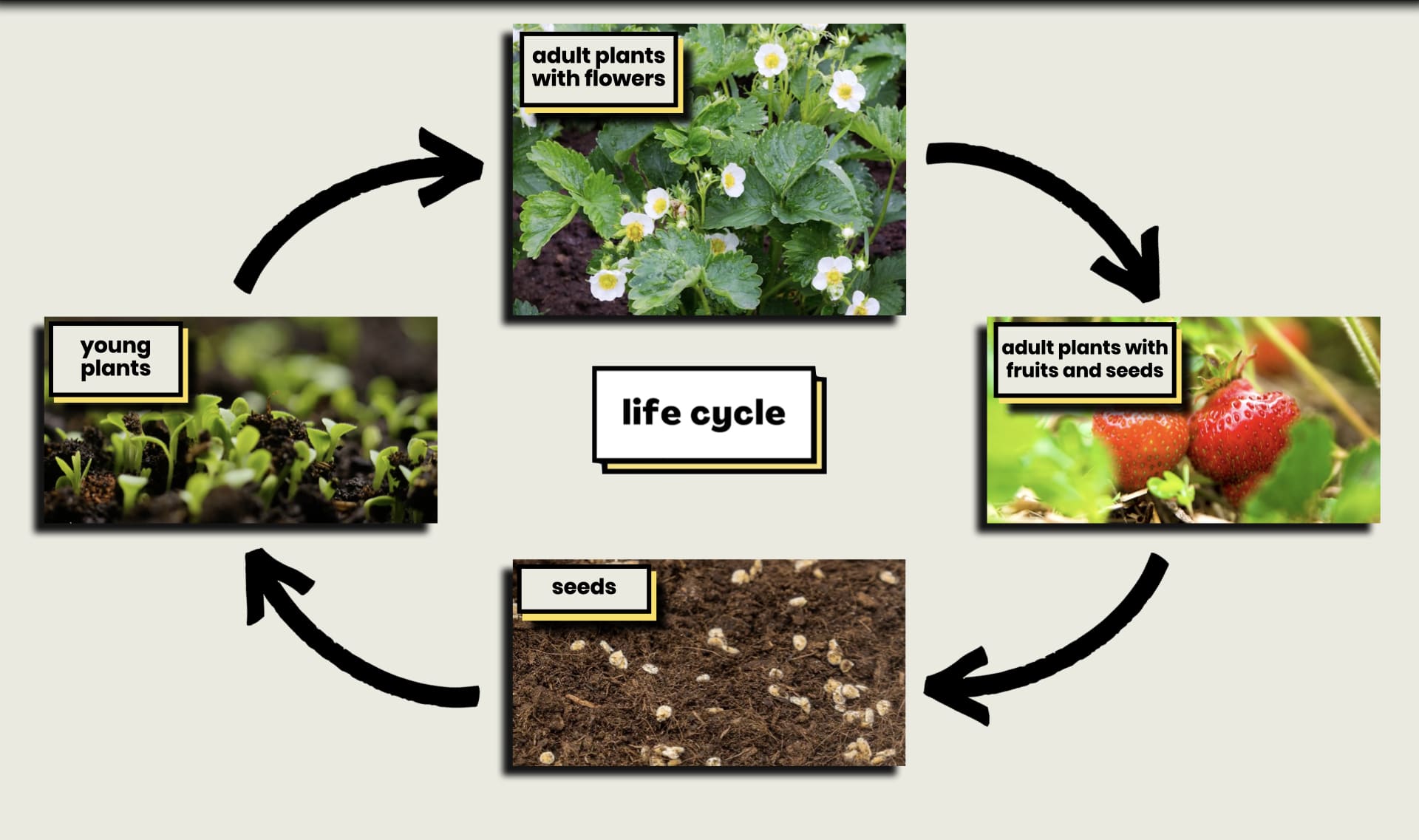
Seeds grow into young plants. Young plants grow into adult plants with flowers.
Flowers turn into fruit with seeds. Then, those seeds can become new young
plants, and start the cycle over again. Most plants go through these steps.

The way this cycle is drawn makes it look like adult plants with fruits and seeds
turn back into seeds. Discuss. What does this cycle show? Do the adult plants turn
back into seeds?
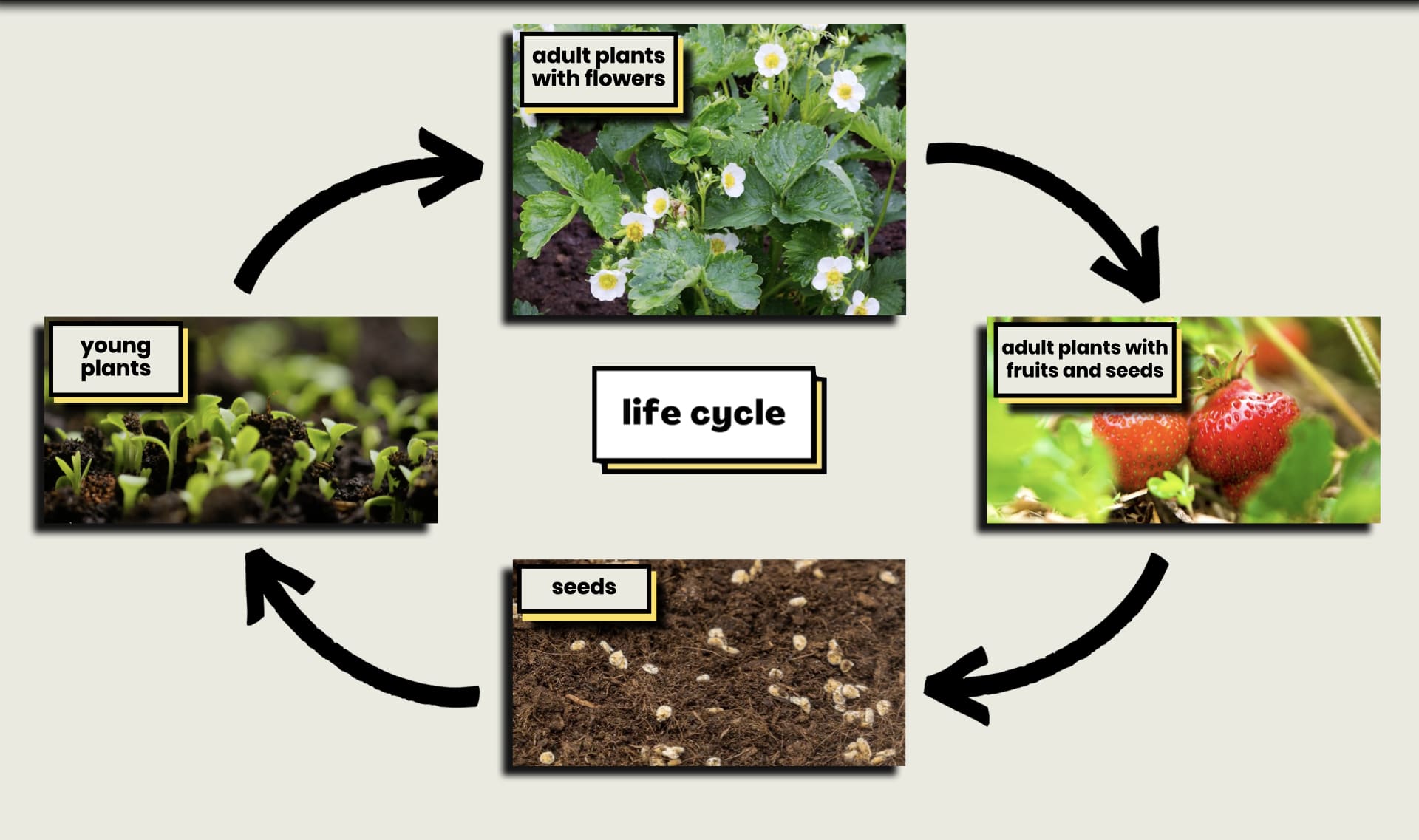
Adult plants do not turn back into seeds. Adult plants make new seeds that grow
into new plants. Those new plants start a new trip around the cycle.
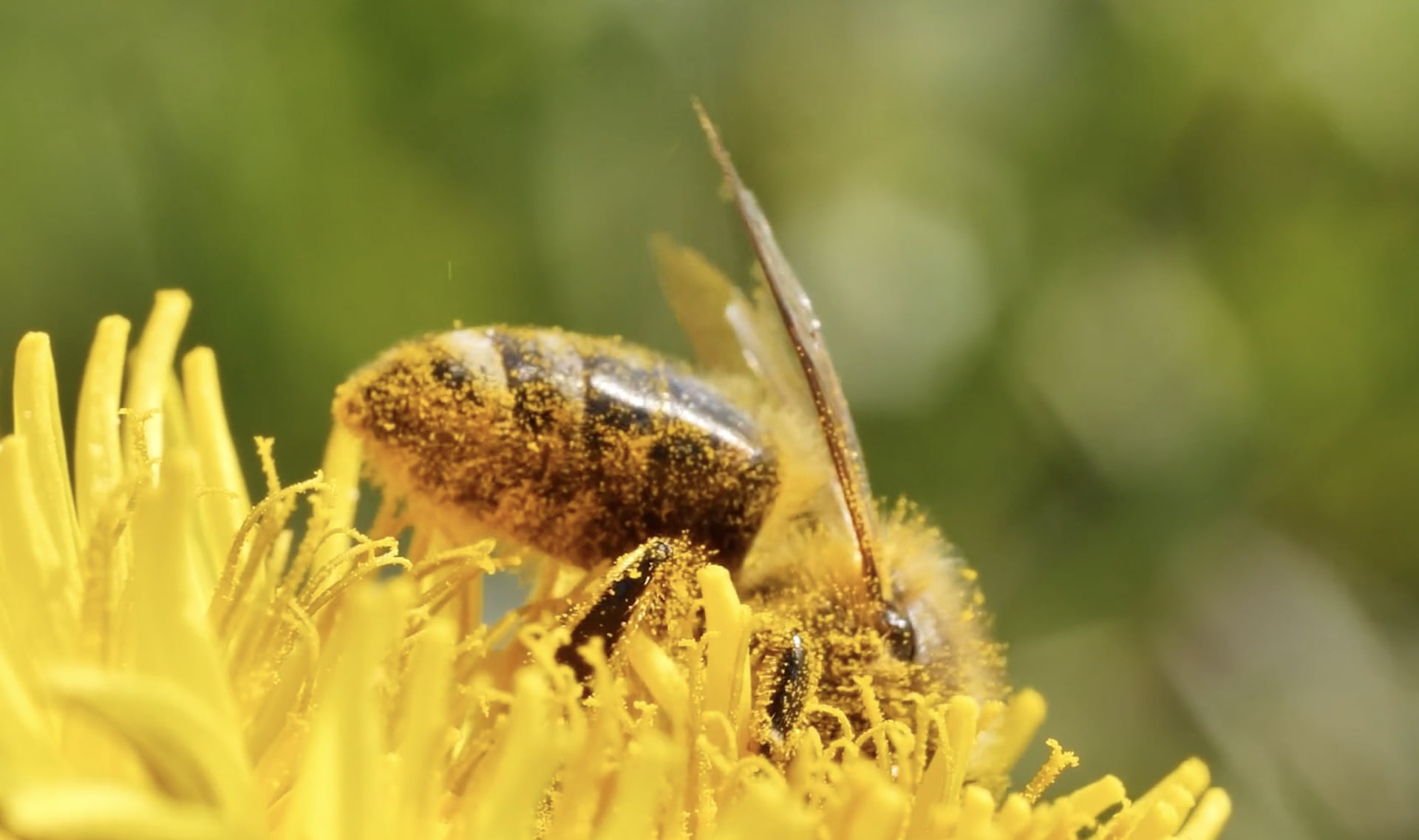
Many plants cannot complete their life cycles without pollinators. Pollinators help
flowers turn into fruits with seeds. Without pollinators, there are no fruits, and
there are no seeds. Discuss. Which pollinators did you see in this past unit?
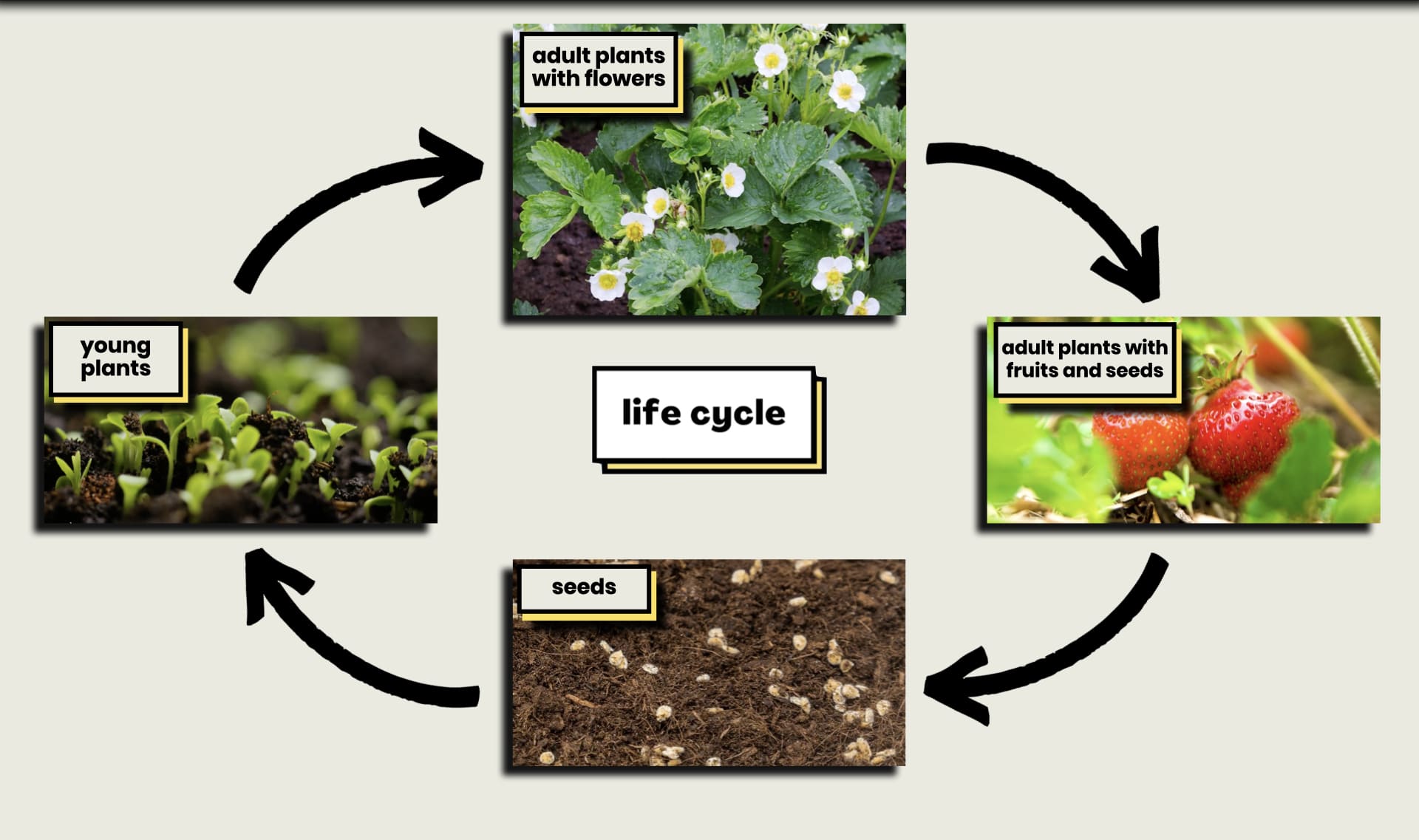
Many plants go through these same steps in their life cycles, including saguaros.
Let’s see if you can figure out what the saguaros look like during each of these
steps.

Saguaros only grow naturally in the green area on this map. The red dot shows
where Saguaro National Park is. Let’s visit the park.

Please wait…
This video is having trouble loading. You may have lost your Internet connection.
Step 1: Click to Reload this page
Step 2: Click to
Try our other video player
Step 3: Contact your teacher if trouble persists.
Or,
dismiss this message.
This is one of the entrances to Saguaro National Park. Let’s drive in and look for
interesting saguaros. Click play when you’re ready.
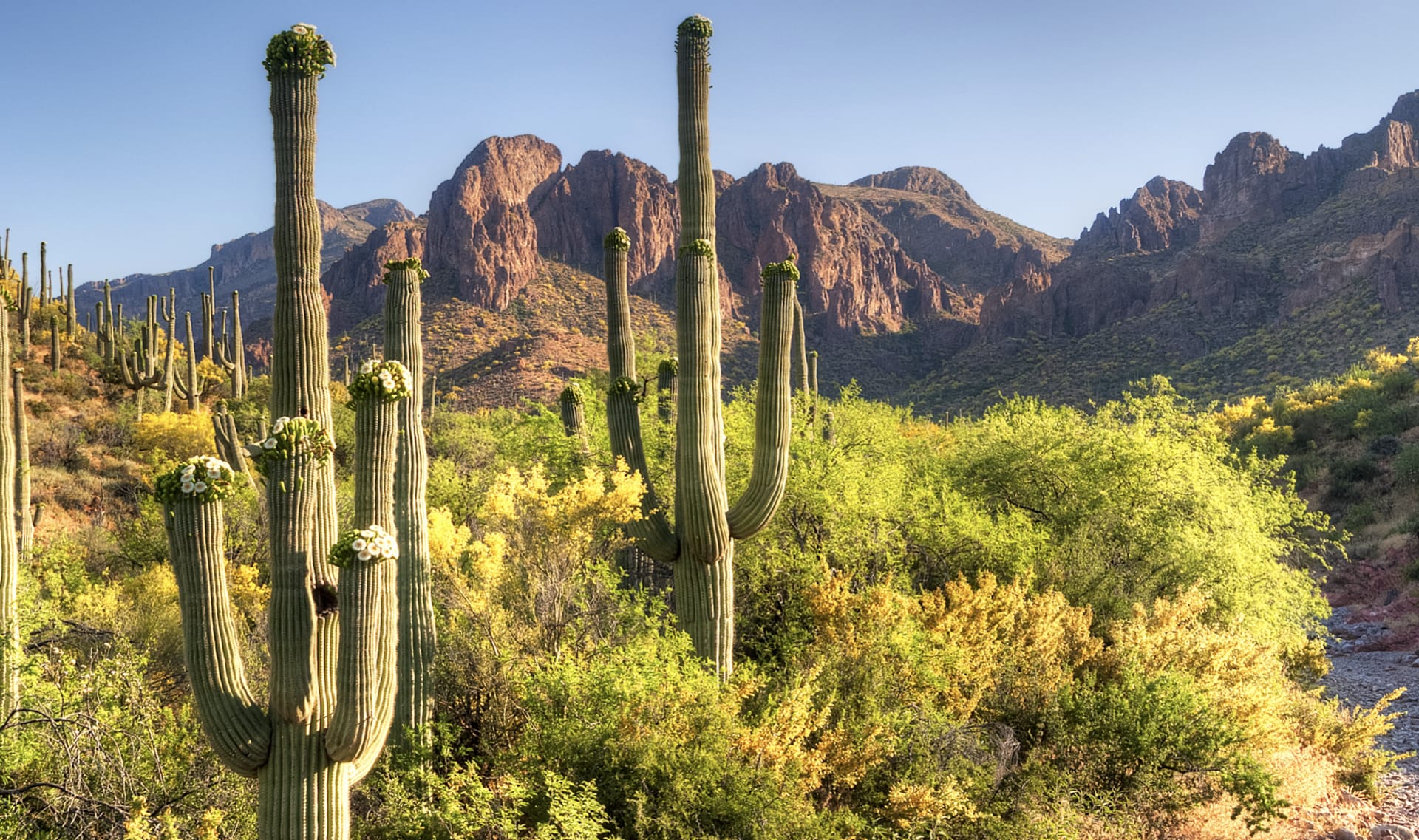
Some saguaros in the park look like this. You have seen saguaros that look like this
before. Discuss. What are those things growing out of the tops of the saguaros?

Please wait…
This video is having trouble loading. You may have lost your Internet connection.
Step 1: Click to Reload this page
Step 2: Click to
Try our other video player
Step 3: Contact your teacher if trouble persists.
Or,
dismiss this message.
Let’s go farther into the park and look for other interesting saguaros.
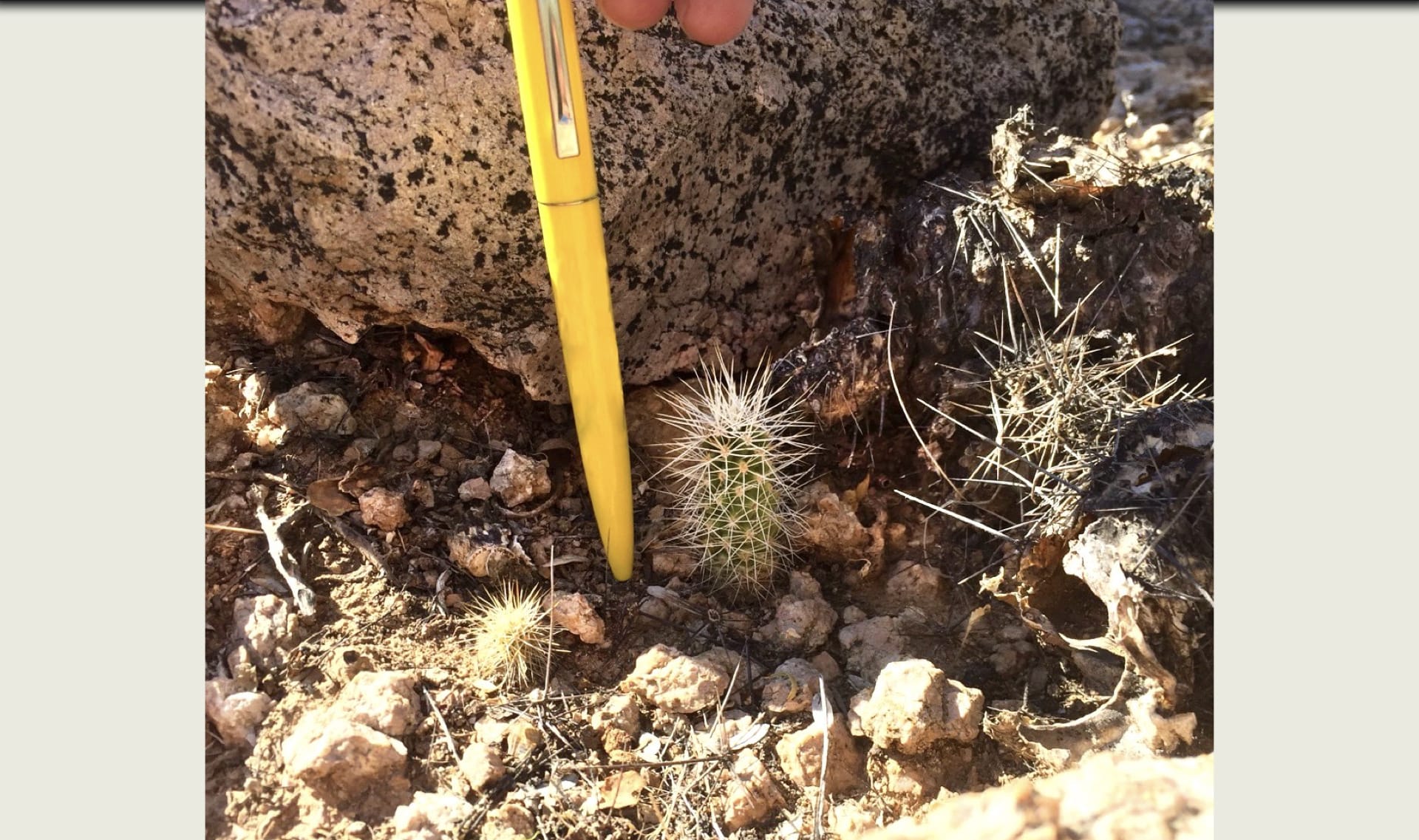
Some saguaros look like this. The pen in the picture will help you tell what size this
saguaro is. Discuss. What do you notice about this saguaro?

But some saguaros look like this. Discuss. What do you see? Why do you think this
saguaro looks so different?

Please wait…
This video is having trouble loading. You may have lost your Internet connection.
Step 1: Click to Reload this page
Step 2: Click to
Try our other video player
Step 3: Contact your teacher if trouble persists.
Or,
dismiss this message.
Let’s go farther into the park and look for other interesting saguaros.

Please wait…
This video is having trouble loading. You may have lost your Internet connection.
Step 1: Click to Reload this page
Step 2: Click to
Try our other video player
Step 3: Contact your teacher if trouble persists.
Or,
dismiss this message.
Look closely at the tops of these saguaros. The flowers have changed into
something new. When those new things peel open, birds and other animals can eat
what is inside. Click play to get a closer look.
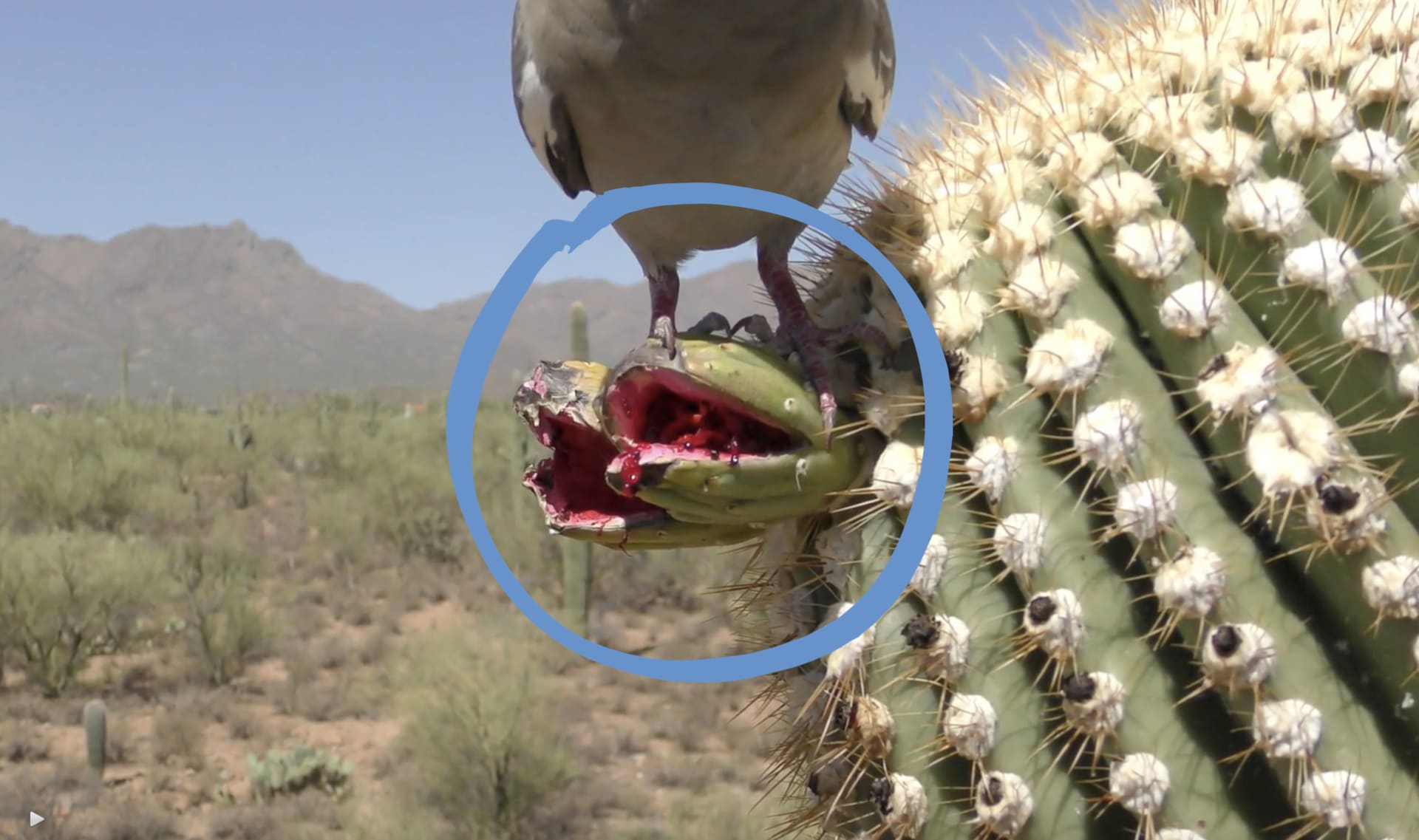
Discuss. What do you think these things are? What makes you think that?
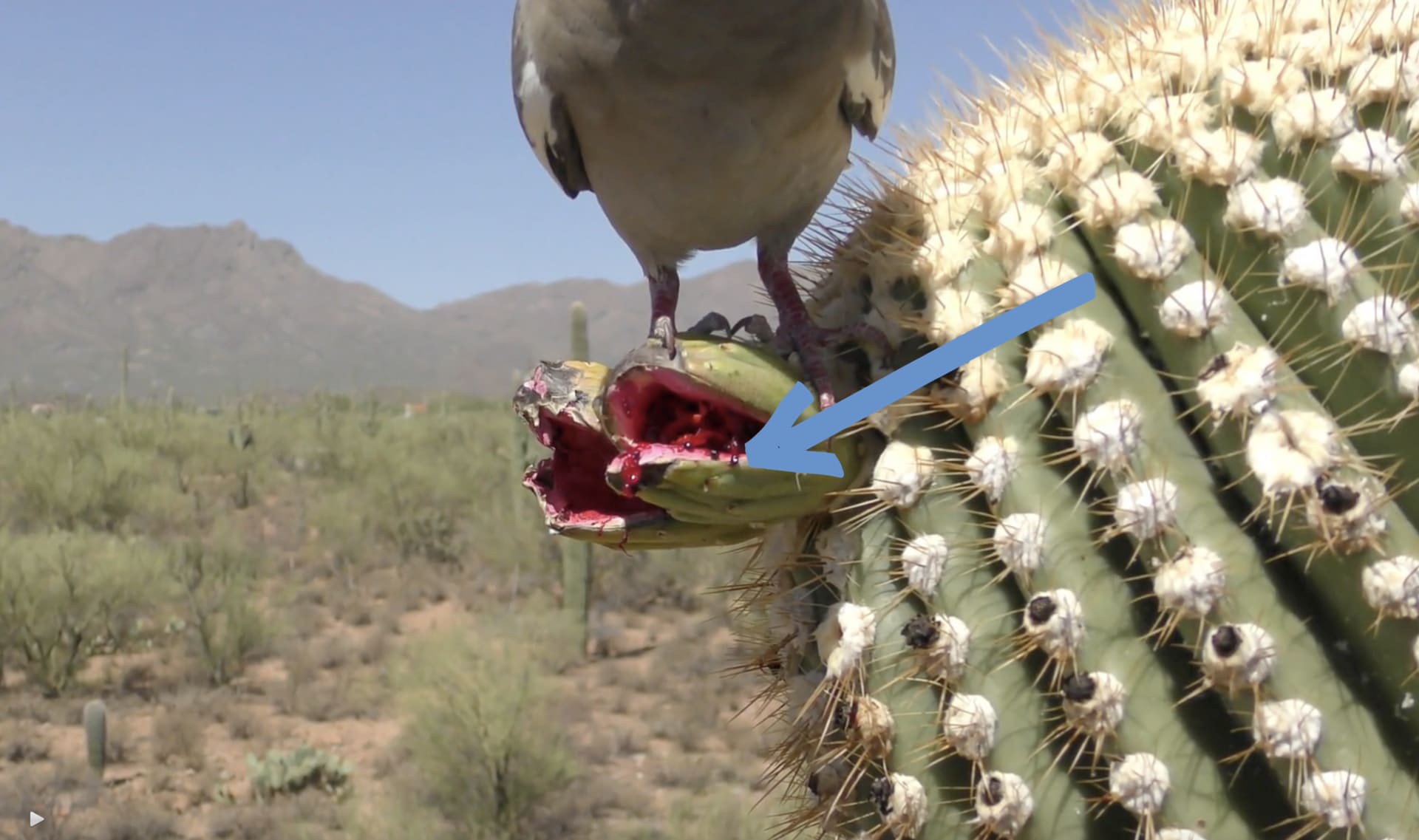
There are tiny, dark brown bits that have come out of the inside. Some of them fell
to the ground. Go to the next slide to see them on the ground.
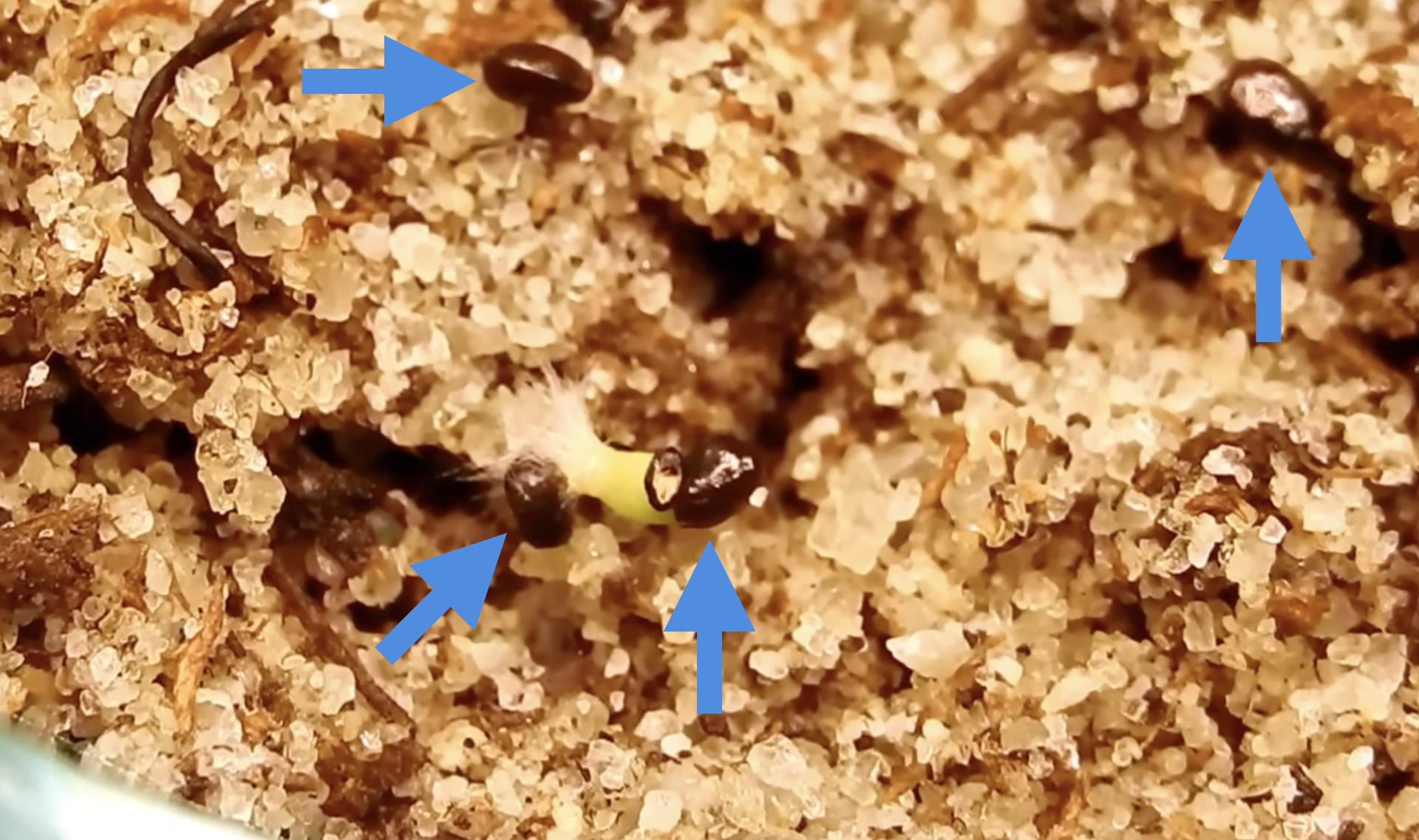
These are the tiny, dark brown bits that fell onto the sand. One of them looks like it
is growing and green. Discuss. What do you think these are? What do you think the
green thing is that has just started growing?

We saw saguaros that all look very different. This is because each of these
saguaros is at a different stage of their life cycle. Let’s see if we can figure out
where each of these saguaros are in their life cycles.
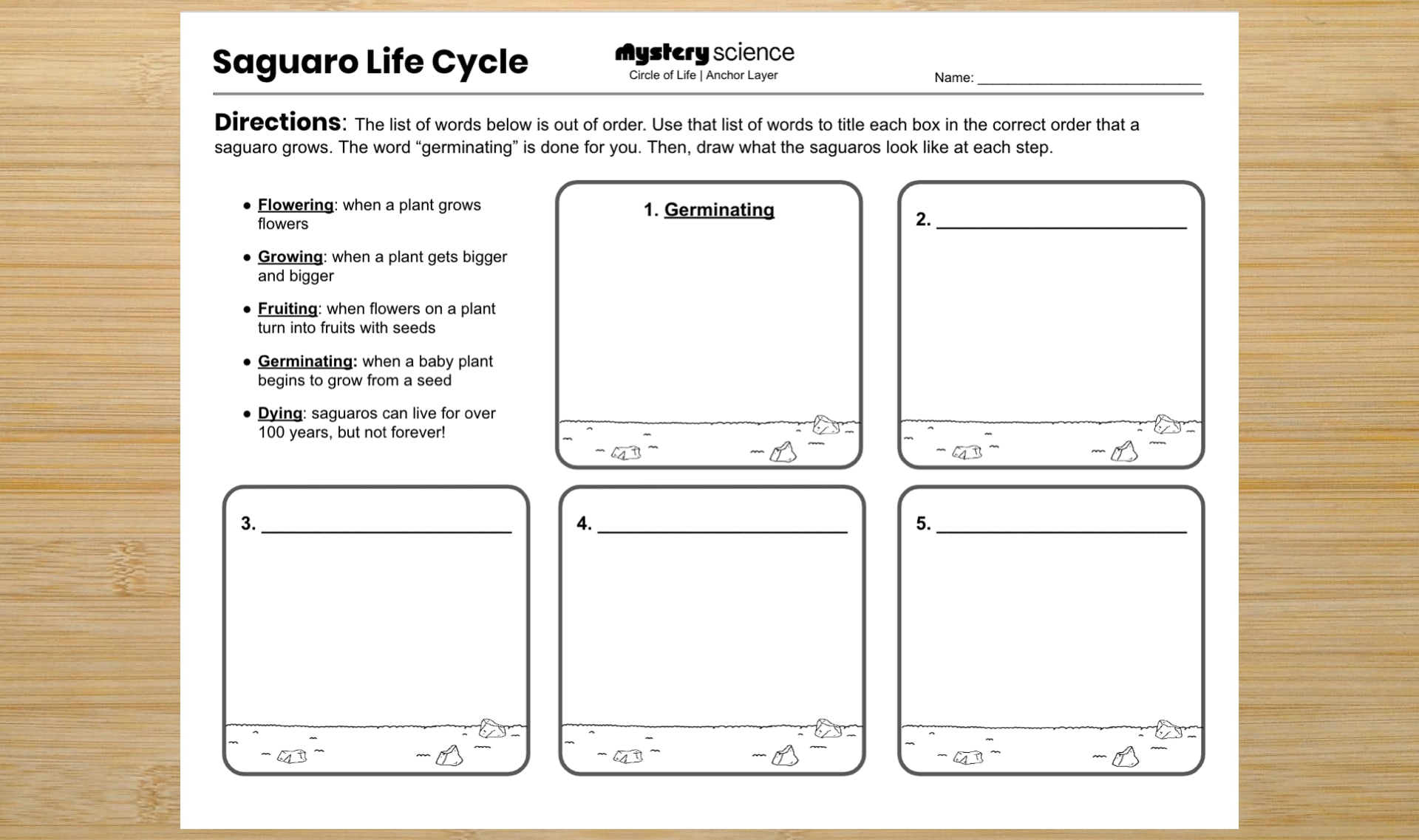
Step
01/07
01/07
In a moment, you will get a Saguaro Life Cycle worksheet.

Step
02/07
02/07
There is a list of words from the worksheet in the blue box below.
These words describe what happens during the steps of the saguaro
life cycle. Read that list as a class now.
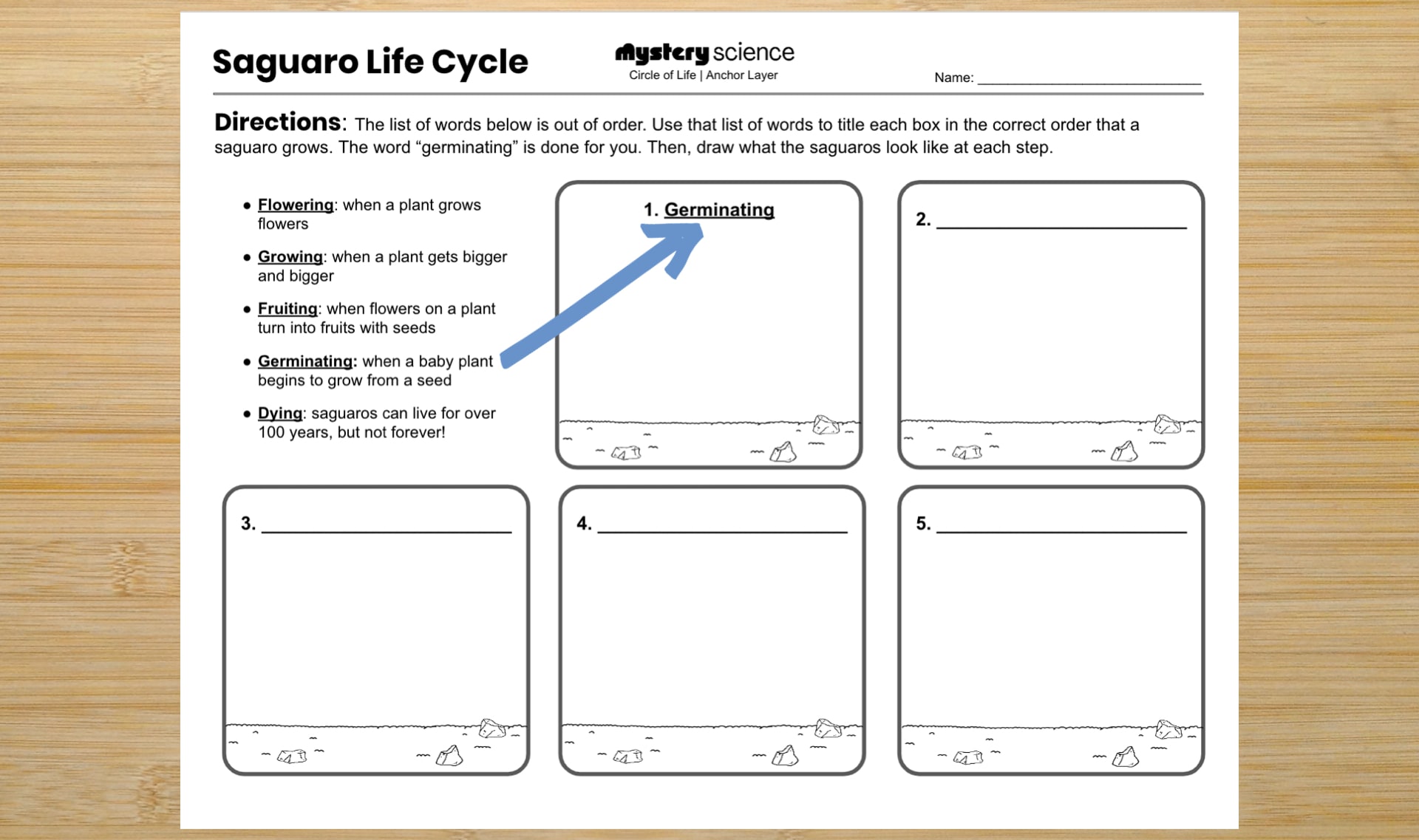
Step
03/07
03/07
Your first job will be to put each of the words from the list, in the
correct order, in one of the other five boxes. Germinating is already
done for you. It goes in the first box because it is the beginning of a
saguaro’s life.
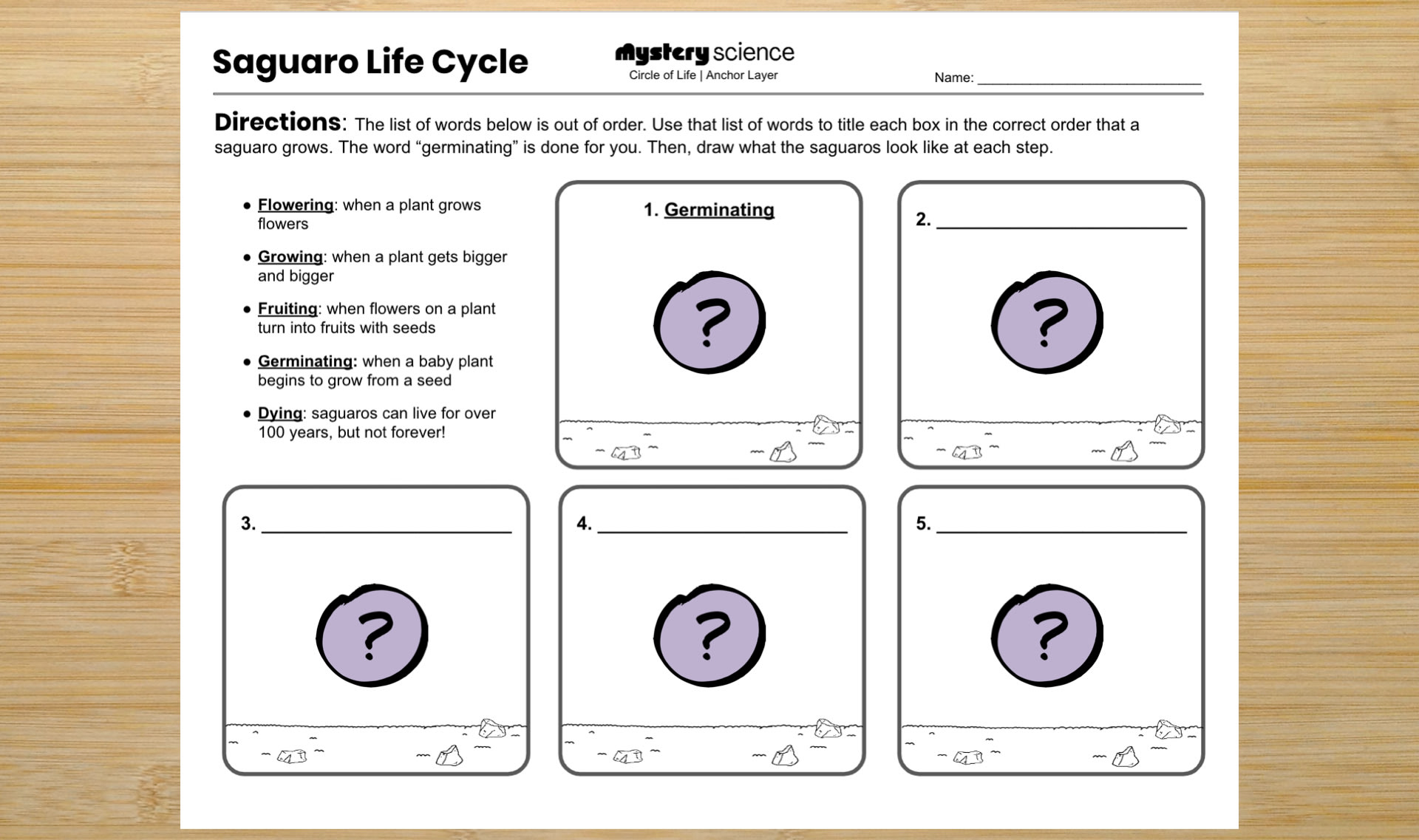
Step
04/07
04/07
Once you have written the correct word in each box, you will draw
what the saguaros look like at each of those steps.
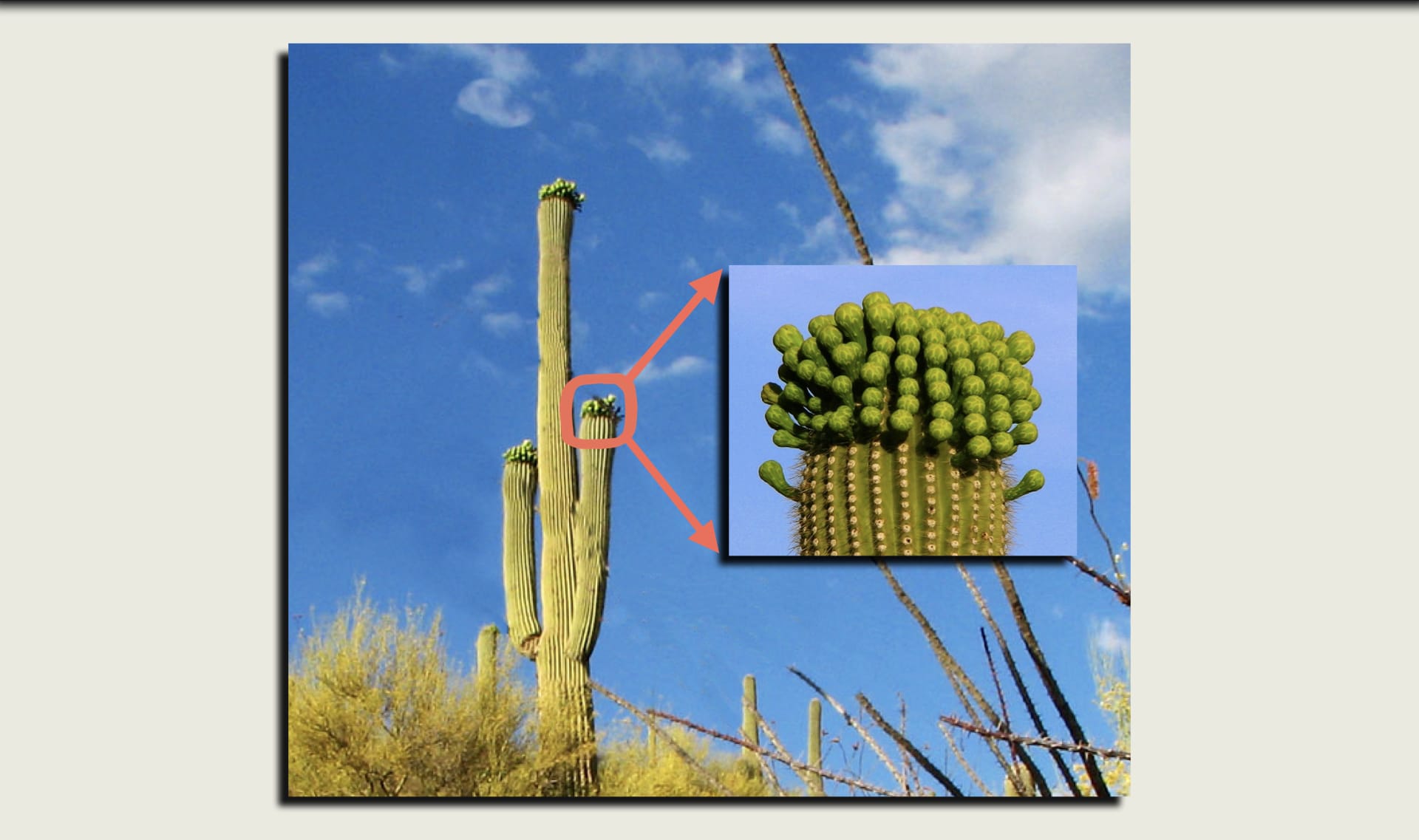
Step
05/07
05/07
When you make your drawings, you can zoom in on something small if
you need to. Draw a loop around the small thing, and then draw
what’s inside the loop, like what you see below.
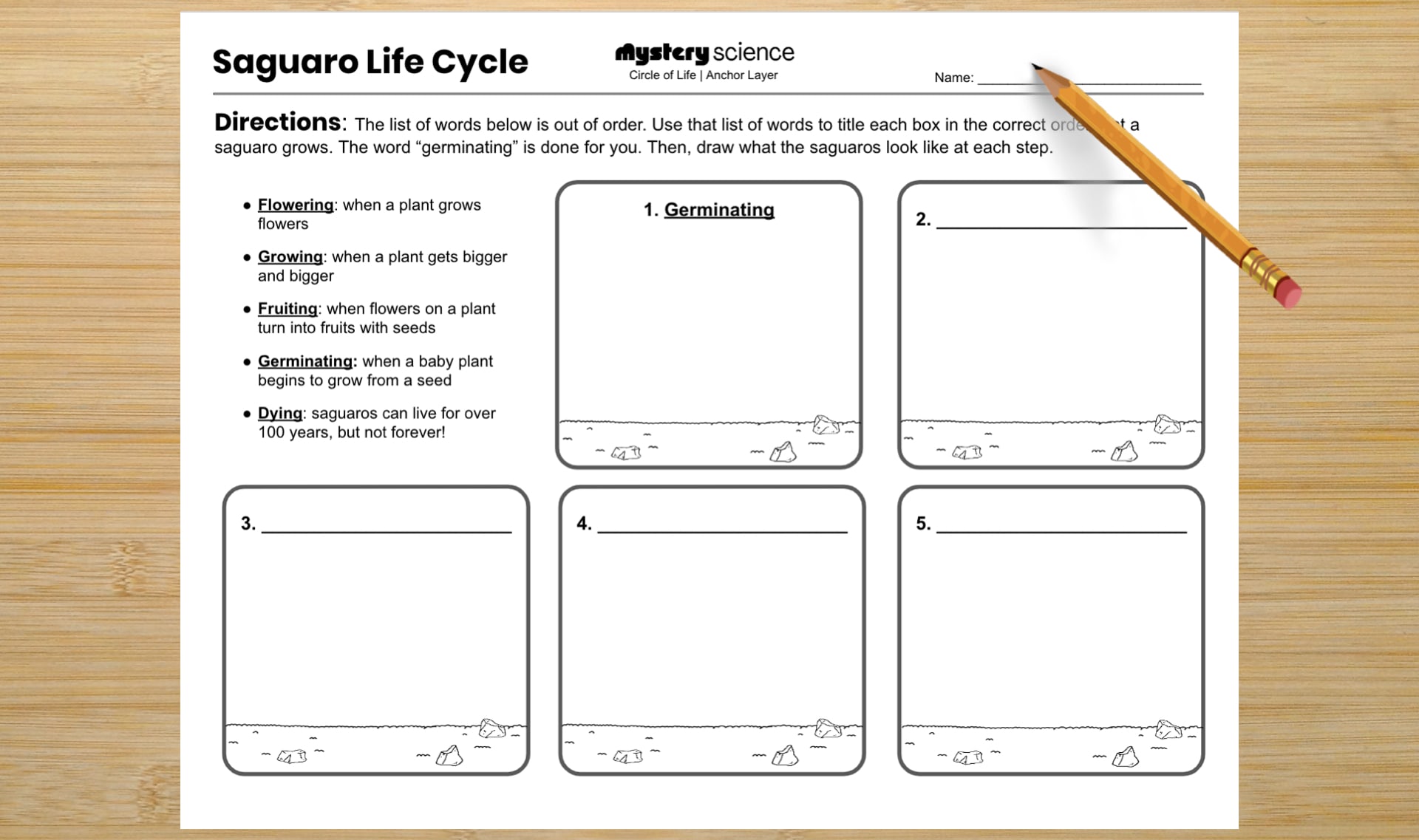
Step
06/07
06/07
Now, get a Saguaro Life Cycle worksheet. Put your name at the top.
Write the words from the list in the correct order in each box, then
draw the correct saguaro in each box. The next slide has the
saguaros you will be drawing.
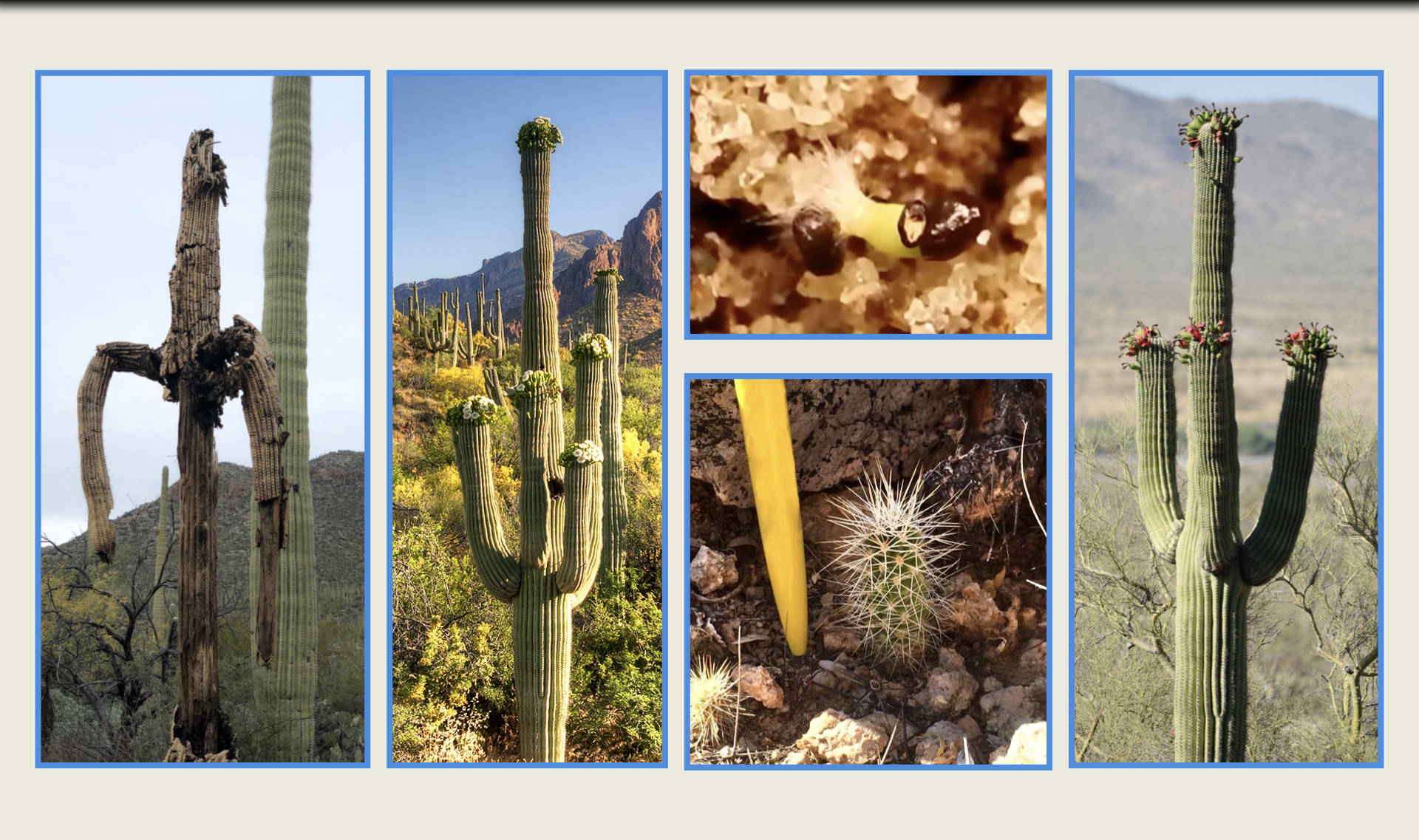
Step
07/07
07/07
These are the saguaros we saw. Draw each one in the correct box on
your worksheet. When you are done, go on to the questions on the
second worksheet.


